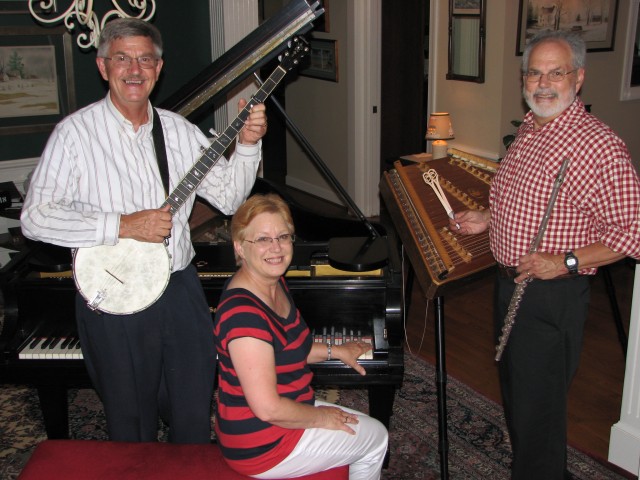Harpsichords and clavichords had been in development for a few centuries when an Italian named Bartolomeo Cristofori decided in the late 1600s to try to adapt the idea of the hammered dulcimer to the chromatic keyboard design.
Harpsichords had only one loudness (known to us as “quiet”), and their tone was essentially always the same plucking-crow-quill sound as well. Cristofori recognized that applying the hammer concept could open the way to a great range of volume and tone --- so he worked on making a sophisticated key assembly that could handle the varied actions of swinging a hammer at the strings. Now, instead of the player’s moving two hammers around on a diatonic (do-re-mi) pattern of notes, he or she would be able to use all ten fingers to push buttons (keys) that swung hammers that were already oriented in front of their chromatic notes. (And separating the right and left hands for different musical roles could create the effect of a "duet" that we're so familiar with in keyboard playing.)
He succeeded! Around 1700 he made a fortepiano (“strong-soft”) for the Medicis of Padua, and the musical world has never been the same! By the time of Beethoven in the early 1800s the piano we know today was essentially done developing. (Builders actually designed pianos for Ludwig personally because he was so popular and he kept demanding new features.)
There’s a lot more information about this in the Wikipedia article about the piano, if you’re interested. (And it does mention the hammered dulcimer prominently!)
I don’t play the piano myself, but I sure wish I did! So I listen a lot to my favorite pianists, particularly the modern player Paul Sullivan and the magnificent Classical artists Arthur Rubinstein, Rudolf Serkin, Glenn Gould, and Martha Argerich. As a consequence, my dream in playing the hammered dulcimer is to make it resonate with the personality and dynamism of a grand piano. Very few other dulcimer players have this same dream, but for me there’s nothing like separating my hands and interweaving the melody and rhythmic chording to get a “whole that’s greater than the sum of its parts” the way a pianist does!
So the dulcimer comes full circle: to the piano and back!





Comments